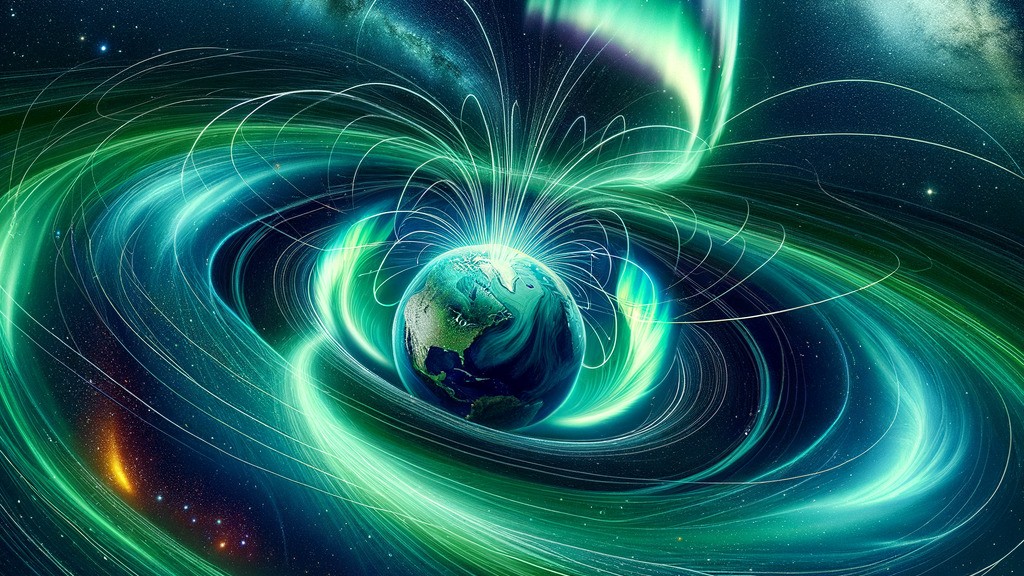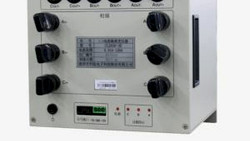Geomagnetic storms — powerful disturbances in Earth's magnetosphere caused by solar wind and solar flares — have the potential to wreak havoc on our planet's power grids. These storms, while a natural display of the dynamic relationship between the Earth and the Sun, pose significant risks to the modern infrastructure we rely on for daily life. This article explores the science behind geomagnetic storms and assesses their potential impact on the power grid, as well as the measures necessary to mitigate such risks.
The Science Behind Geomagnetic Storms
Geomagnetic storms originate from the Sun, which is a dynamic star continuously ejecting streams of charged particles, known as the solar wind. Occasionally, the Sun releases a significant burst of solar energy in the form of solar flares or coronal mass ejections (CMEs). When these charged particles collide with Earth's magnetic field, they can cause complex changes in the magnetosphere, leading to geomagnetic storms.
The G-scale classification, also known as the NOAA G-scale, is a specific system used by the National Oceanic and Atmospheric Administration (NOAA) to categorize geomagnetic storms based on their severity and potential impact on Earth's magnetic field. Let's break it down:
- G1 (Minor) Geomagnetic Storm
This represents minor storms with a G-index of 1. They typically have minimal impact on power systems and are characterized by slightly disturbed geomagnetic conditions. Auroras may be visible at high latitudes during G1 storms. - G2 (Moderate) Geomagnetic Storm
G2 storms are moderate in intensity, with a G-index of 2. They can cause fluctuations in power grids, leading to voltage control issues and potential transformer heating. These storms may also affect satellite operations and disrupt radio communications. Auroras may be visible at lower latitudes during G2 storms. - G3 (Strong) Geomagnetic Storm
G3 storms are strong with a G-index of 3. They can cause voltage alarms in power systems, leading to transformer damage and possible widespread voltage control issues. They may also disrupt satellite operations and cause radio communication blackouts. Auroras can be visible at even lower latitudes during G3 storms. - G4 (Severe) Geomagnetic Storm
G4 storms are severe with a G-index of 4. They have the potential to cause widespread voltage control problems, leading to complete collapse or significant damage to power grids. Satellite operations may be significantly affected, and high-frequency radio communication can be disrupted. Auroras can be visible at very low latitudes during G4 storms. - G5 (Extreme) Geomagnetic Storm
G5 storms are the most intense with a G-index of 5. They represent extreme conditions that can cause widespread voltage control issues and damage to power grids, leading to long-term outages. Satellites may experience critical anomalies, and low-frequency radio navigation signals can be degraded or lost. Auroras can be visible at extremely low latitudes during G5 storms.
Solar Activity Cycles
The Sun, our mighty celestial neighbor, goes through an intriguing 11-year cycle of solar activity known as the solar cycle. This cycle is characterized by fluctuations in the Sun's magnetic field and the number of sunspots visible on its surface. At the height of this cycle, we experience what's known as a solar maximum.
During the solar maximum, the Sun becomes more active, and its surface becomes a hub of captivating phenomena. One such phenomenon is the occurrence of solar flares and coronal mass ejections (CMEs). Solar flares are intense bursts of radiation and energy, while CMEs are massive eruptions of plasma and magnetic fields from the Sun's outer atmosphere.
As the solar maximum approaches, the frequency and intensity of these solar flares and CMEs increase. These eruptions release vast amounts of charged particles and magnetic energy into space. When Earth happens to be in the path of these energetic outbursts, they can interact with our planet's magnetic field, leading to the creation of geomagnetic storms.
Geomagnetic storms occur when the charged particles and energy from solar flares and CMEs interact with Earth's magnetosphere. This interaction can cause disturbances in our planet's magnetic field and result in a variety of effects, including fluctuations in the Earth's electric and magnetic fields.
During these periods of heightened solar activity, the likelihood of geomagnetic storms occurring increases. These storms can have various impacts, from causing disruptions in power grids and satellite communications to creating mesmerizing displays of auroras in the sky.
Transformer Damage
Geomagnetically Induced Currents (GICs) pose a substantial threat to the high-voltage transformers that serve as the backbone of our power grid. These transformers are engineered to handle the smooth flow of alternating current (AC) but can face severe damage when exposed to the direct current (DC) that is induced during geomagnetic storms.
When a geomagnetic storm occurs, the Earth's magnetic field undergoes disturbances, which in turn induce electric currents in long conductive structures such as power transmission lines. These induced currents, known as GICs, can flow into the power grid and find their way into the transformers.
The main issue arises from the fact that transformers are not designed to handle DC. The presence of GICs can result in the accumulation of excess heat within the transformer's core and windings. This overheating can lead to a range of damaging effects, including the breakdown of the transformer's insulation, degradation of its magnetic properties, and ultimately, the failure of the transformer itself.
The breakdown of insulation is particularly concerning because it can result in the short-circuiting of the transformer's internal components and the release of large amounts of energy. This can have cascading effects, potentially leading to widespread power outages and disruptions.
In addition to transformer damage, GICs can lead to voltage regulation problems and reactive power loss, which can cause grid instability. In extreme cases, this can trigger widespread blackouts. Some incidents potentially being linked to geomagnetic activity have been:
- Sweden, 2003
This event is still being studied but researchers found evidence of induced geoelectric currents coinciding with a solar storm that may have contributed to tripping relay protections. However, the root cause wasn't definitively identified. - United States, 1989
There is some evidence this storm caused transformer harmonics that could have interacted with grid issues from cold weather. But again, no scientific consensus this was the sole or primary trigger for the outage. - South Africa, 1989
Studies found elevated geoelectric fields from solar activity preceded the blackout. However, aging infrastructure and operations limitations were likely larger contributing factors. - United Kingdom, 2015
Minor glitches were noted but disruptive impacts cannot be separated from other weather and system issues happening at the same time with confidence.
While there are hypotheses of geomagnetic influences raised in some cases, the evidence remains uncertain orunable to rule out other contemporaneous causes with authority in each example. More research is still needed to clarify any roles of solar weather.

Mitigating the Risks
Addressing the threat of geomagnetic storms to the power grid requires a multifaceted approach, including both preventative measures and response strategies.
Infrastructure Hardening
Protecting the power grid against the detrimental effects of geomagnetically induced currents (GICs) is of paramount importance. To ensure the resilience of our infrastructure, several methods of hardening can be implemented to minimize the impact of GICs on the power grid.
One key approach to grid protection involves upgrading transformers to better withstand the effects of GICs. Advanced transformer designs with enhanced insulation systems and increased thermal withstand capabilities can be employed. These upgrades help to mitigate the risk of overheating and insulation breakdown when exposed to the direct currents induced by geomagnetic storms.
In addition to transformer upgrades, the installation of GIC-blocking devices is another crucial measure. These devices, such as GIC blocking filters or series capacitors, are strategically placed within the power grid to mitigate the flow of GICs. By reducing the amount of GICs entering the transformers and other critical components, these devices help safeguard the integrity and functionality of the grid.
Reinforcing the grid architecture is also essential in protecting against GICs. This involves implementing measures to enhance the overall resilience of the power grid infrastructure. For example, power utilities can employ redundant transmission paths and diversify their power sources to minimize the vulnerability of the grid to GIC-related disturbances. By ensuring multiple paths for power flow and reducing reliance on specific transmission lines, the grid becomes more robust and less susceptible to widespread disruptions caused by GICs.
Grid Operating Procedures
Utilities play a critical role in mitigating the risks associated with geomagnetically induced currents (GICs) during a geomagnetic storm. To minimize the potential damage to the power grid, utilities can develop and implement specific operating procedures tailored to address the challenges posed by GICs.
One effective strategy is to reconfigure the grid during geomagnetic storm events. By strategically adjusting the power flow and redistributing the load, utilities can minimize the impact of GICs on vulnerable components, such as transformers. This involves diverting power away from areas that are more susceptible to GIC-related stress and rerouting it through paths that are less affected.
Temporary shutdowns of vulnerable components can also be a proactive measure. Utilities can identify critical transformers or other equipment that may be at high risk of damage due to GICs and purposefully deactivate or isolate them during geomagnetic storm events. By effectively isolating these components, utilities can prevent or reduce the potential for overheating and insulation breakdown, safeguarding the integrity of the grid.
Furthermore, utilities can establish communication protocols and coordination procedures with other stakeholders, such as regional transmission operators and neighboring utilities. This collaboration ensures that information regarding the severity of the geomagnetic storm and the potential risks of GICs is shared promptly. By coordinating responses and taking collective action, utilities can further enhance the resilience of the power system during these events.
It's important to note that the development of operating procedures should be based on thorough risk assessments and modeling studies. Utilities can utilize historical data, geomagnetic forecasts, and advanced modeling techniques to identify areas of the grid that are particularly susceptible to GIC-related damage. This knowledge enables utilities to prioritize and optimize their operating procedures to effectively protect critical infrastructure.
International Collaboration
International collaboration is crucial when it comes to addressing the global nature of geomagnetic threats and preparing for the effects of geomagnetic storms on power grids. By sharing data and best practices, grid operators worldwide can benefit from collective knowledge and experiences, ultimately enhancing their ability to mitigate the impact of these storms.
One key aspect of international collaboration is the sharing of geomagnetic data. Different countries and regions may have varying levels of monitoring capabilities and access to geomagnetic data. By establishing collaborative networks and data-sharing agreements, grid operators can gain access to a broader range of data sources, including real-time geomagnetic measurements and forecasts. This comprehensive data allows for a more accurate assessment of the potential risks and impacts of geomagnetic storms on power grids across different regions.
In addition to data sharing, the exchange of best practices is vital in helping grid operators prepare for and mitigate the effects of geomagnetic storms. By learning from the experiences of others, grid operators can gain valuable insights into effective strategies, technologies, and operating procedures. This knowledge sharing can include information on grid hardening techniques, early warning systems, response protocols, and recovery strategies. By implementing proven best practices, grid operators can better protect their infrastructure and minimize the disruption caused by geomagnetic storms.
International collaboration also facilitates the development of common standards and guidelines for geomagnetic storm preparedness and mitigation. Through collaborative efforts, experts from different countries can contribute their expertise to the creation of robust and comprehensive standards that address the unique challenges posed by geomagnetic storms. These standards can cover areas such as grid resilience, equipment specifications, monitoring requirements, and response protocols. By adhering to common standards, grid operators can ensure a consistent and effective approach to mitigating the effects of geomagnetic storms globally.
Furthermore, international collaboration provides a platform for research and development initiatives aimed at advancing the understanding of geomagnetic storms and their impact on power grids. By pooling resources and expertise, scientists and engineers can work together to develop innovative technologies and solutions that enhance the resilience of power grids. This collaborative research can lead to the development of improved monitoring systems, more robust grid infrastructure, and advanced modeling techniques, all of which contribute to better preparedness and mitigation strategies.
Takeaway
Geomagnetic storms present a clear and present danger to the power grid, with the potential to disrupt economies, endanger national security, and interrupt daily life. As our reliance on electricity grows, the need to safeguard against these cosmic disturbances becomes increasingly critical. Through a combination of improved technology, rigorous engineering standards, effective monitoring, and international cooperation, we can enhance the resilience of our power grid and ensure that when the next geomagnetic storm arrives, we are prepared to weather the storm.
I hope you found this article insightful and informative. Understanding the science behind geomagnetic storms and their potential impact on the power grid is crucial in today's electrified world.
Your thoughts and comments on this topic are always welcome, so feel free to share your insights and perspectives. Thank you for reading, and until then, keep shining bright like a solar panel on a sunny day!





I can't understand why this incredibly important issue is not mandatory media FYI front page news.
Dear Claudia, thank you for your comment on our article. We appreciate your engagement and concern regarding the importance of this issue.
In response to your query, we would like to inform you that while it may not always make front-page news, the topic of geomagnetic storms and their impact is indeed covered by various media outlets, including the German Tagesschau. In fact, on December 17, 2023, Tagesschau reported that a G2 geostorm is approaching. Such storms not only affect the power grid but also have consequences for satellites and certain types of radio communication. Additionally, one fascinating aspect of these storms is that they can lead to the appearance of Northern Lights, which can be observed even in regions far south of the Polar regions.
We hope this information addresses your concerns and sheds light on the broader coverage of this important issue.